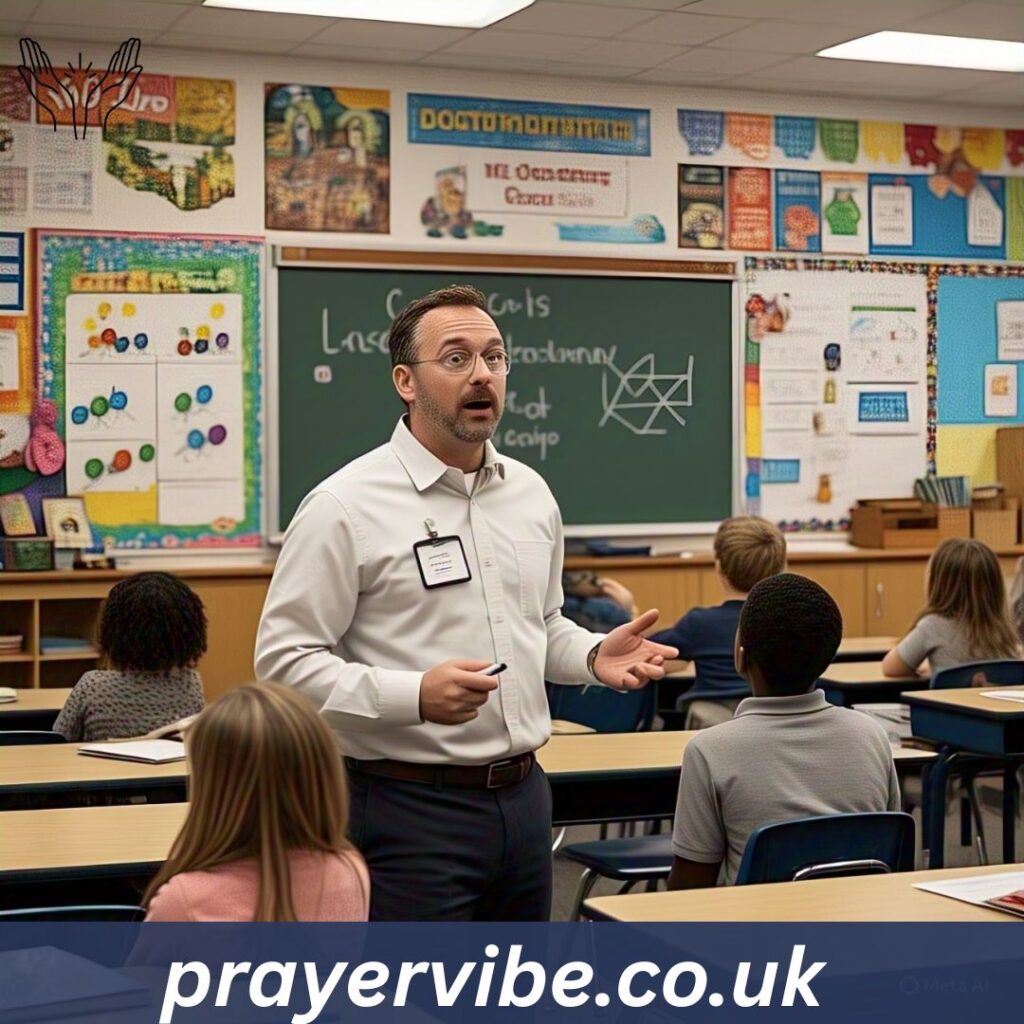Mastering the nuances between teacher’s, teachers’, and teachers is crucial for effective communication. These terms might appear similar, but they carry distinct meanings in professional writing.
Whether you’re drafting an email, preparing a report, or composing a newsletter, proper grammar usage reflects professionalism and ensures your message is clearly understood.
In this comprehensive guide, we’ll explore the meanings, uses, and common pitfalls of these forms. You’ll discover practical tips, examples, and memory strategies to master these rules. By the end, you’ll confidently navigate these grammatical challenges.
🙏 Divine Prayer Generator
Select a prayer category to begin
What Do Teacher’s, Teachers’, and Teachers Mean?
At first glance, teacher’s, teachers’, and teachers look nearly identical. However, their meanings differ significantly based on whether they indicate possession, plurality, or both.
Here’s a clear breakdown:
| Form | Meaning | Example |
| Teacher’s | Singular possessive (ownership by one teacher) | The teacher’s lesson plan was detailed. |
| Teachers | Plural form (more than one teacher, no ownership) | The teachers attended the conference. |
| Teachers’ | Plural possessive (ownership by multiple teachers) | The teachers’ feedback was constructive. |
Each of these forms serves a unique grammatical purpose and contributes to writing clarity.
Teacher’s (Singular Possessive Form)
The singular possessive form, teacher’s, shows that something belongs to one teacher. The apostrophe followed by an “s” indicates possession by a single individual.
Examples of Teacher’s or Teachers’ or Teachers in Use
Professional Settings:
- “The teacher’s methodology impressed the principal.”
- “We reviewed the teacher’s assessment criteria.”
Educational Contexts:
- “The teacher’s classroom was well-organized.”
- “Students appreciated the teacher’s patience.”
Scenarios:
- “The teacher’s experience guided our decision.”
- “We implemented the teacher’s suggestions immediately.”
Why It Matters?
Using teacher’s correctly is essential to convey possession by one teacher. Misplacing the apostrophe, such as writing “teachers desk”, creates confusion and may reflect poorly on your attention to grammatical detail.
Real-Life Example
Imagine you’re writing an evaluation report:
“The teacher’s innovative approach to student engagement resulted in improved classroom participation.”
Here, the approach belongs to one specific teacher. Using teacher’s ensures precision and prevents misinterpretation.
Quick Tip
To confirm you’re using teacher’s correctly, ask yourself: “Does this belong to one teacher?” If the answer is yes, you’ve chosen the right form.
Teachers (Plural Form)
The plural form, teachers, refers to more than one teacher and does not indicate possession. It simply describes a group of educators without implying ownership.
Examples of Teachers in Use
Faculty Meetings:
- “The teachers collaborated on curriculum development.”
- “Several teachers volunteered for extra duties.”
Professional Development:
- “The teachers attended workshops during summer break.”
- “New teachers received mentorship from experienced colleagues.”
General References:
- “The teachers shared best practices during the meeting.”
- “All teachers agreed to implement the new policy.”
Why It Matters?
Confusing teachers with teacher’s or teachers’ can lead to miscommunication. For example, writing “the teachers decision” when you mean “the teachers’ decision” could confuse readers about whether you’re referring to one or multiple educators.
Real-Life Example
Consider this sentence in a school newsletter:
“The teachers were instrumental in organizing the successful fundraising event.”
Here, you’re referring to a group of teachers without implying possession. The absence of an apostrophe correctly reflects this meaning.
Quick Tip
Use teachers when the focus is on the number of individuals, not ownership or possession.
Teachers’ (Plural Possessive Form)

The plural possessive form, teachers’, indicates that something belongs to or is associated with a group of teachers. The apostrophe after the “s” signifies that the noun is both plural and possessive.
Examples of Teachers’ in Use
Administrative Contexts:
- “The teachers’ recommendations were implemented school-wide.”
- “We considered the teachers’ concerns about workload.”
Collaborative Efforts:
- “The teachers’ joint proposal received approval.”
- “The teachers’ collective expertise enhanced the program.”
Professional Reports:
- “The teachers’ evaluation highlighted areas for improvement.”
- “We documented the teachers’ contributions to student success.”
Why It Matters?
Failing to use teachers’ correctly can confuse readers. For example, writing “the teachers meeting” instead of “the teachers’ meeting” might create ambiguity about ownership or intent.
Real-Life Example
In a performance review, you might write:
“The teachers’ collaborative efforts resulted in significant improvements in student achievement scores.”
This usage clearly indicates that the efforts belong to multiple teachers working together.
Quick Tip
Double-check that the noun refers to multiple teachers before adding the apostrophe. If it involves more than one teacher, teachers’ is the correct choice.
Key Differences Between Teacher’s, Teachers’, and Teachers
Understanding the distinctions between these forms is critical for avoiding grammatical errors. Here’s a detailed comparison:
| Form | Ownership | Plurality | Example |
| Teacher’s | Singular possessive | Singular | The teacher’s grading rubric was clear. |
| Teachers | None (just plural) | Plural | The teachers collaborated effectively. |
| Teachers’ | Plural possessive | Plural | The teachers’ schedules were coordinated. |
Mnemonic to Remember
Here’s a simple memory device:
- If it’s one teacher’s, use ‘s.
- If it’s many teachers, just write teachers.
- If it belongs to many teachers, use teachers’.
This method ensures you won’t confuse the forms.
Why It Matters in Professional Communication?
Correctly using teacher’s, teachers’, and teachers reflects your attention to detail and enhances communication precision. Errors can cause confusion or make your writing appear unprofessional.
Professional Scenarios of Teacher’s or Teachers’ or Teachers
Consider these examples:
- “The teachers’ lounge needs renovation.” (Multiple teachers use the space.)
- “The teacher’s methodology was innovative.” (One teacher developed the method.)
Misusing apostrophes can lead to misunderstandings, which is particularly problematic in educational and professional contexts.
Examples of Professional Scenarios
Emails: Writing “The teachers meeting is scheduled” instead of “The teachers’ meeting is scheduled” could confuse recipients about whether it’s a descriptive phrase or possessive form.
Reports: Misplacing an apostrophe in phrases like “The teachers recommendation” can undermine the document’s credibility.
Official Documents: Incorrect grammar in policy documents or announcements can erode trust in institutional communication.
By understanding the differences between teacher’s, teachers, and teachers’, you can enhance clarity and professionalism in all forms of communication.
Common Mistakes and How to Avoid Them
Even experienced writers can struggle with teacher’s, teachers’, and teachers. Here are frequent errors and strategies to avoid them.
Teacher’s or Teachers’ or Teachers Common Errors
Using teacher’s for plural:
- Incorrect: “The teacher’s were impressed by student performance.”
- Correct: “The teachers were impressed by student performance.”
Misplacing apostrophes in possessives:
- Incorrect: “The teachers’s opinions varied significantly.”
- Correct: “The teachers’ opinions varied significantly.”
Overcomplicating plural possessives:
- Incorrect: “The teachers’s classroom management was effective.”
- Correct: “The teachers’ classroom management was effective.”
How to Avoid These Errors?
Double-Check Apostrophes: Determine whether the noun is singular or plural, then decide if it needs an apostrophe for possession.
Use Grammar Tools: Software like Grammarly or ProWritingAid can identify and correct apostrophe mistakes.
Practice Regularly: Rewrite sentences using all three forms to build familiarity and confidence.
Tips for Correct Usage of Teacher’s or Teachers’ or Teachers

Mastering these forms doesn’t have to be complicated. Follow these practical strategies for using teacher’s, teachers, and teachers’ correctly.
1. Determine Ownership
Ask yourself whether the subject owns or possesses something. If so, decide whether it’s singular or plural ownership.
- One teacher’s desk was organized perfectly.
- The teachers’ desks were arranged in rows.
2. Check for Quantity
Ensure you’re clear about whether you’re referring to one teacher or multiple teachers.
- Singular: The teacher’s schedule was packed with meetings.
- Plural: The teachers were busy preparing lesson plans.
3. Use Real-World Examples
Apply these forms to scenarios you encounter in daily communication:
- Teacher’s: “The teacher’s enthusiasm was contagious.”
- Teachers: “The teachers collaborated on interdisciplinary projects.”
- Teachers’: “The teachers’ collective wisdom shaped school policy.”
Additional Examples to Clarify
Email Example (Teacher’s)
“The teacher’s innovative use of technology enhanced student engagement significantly.”
Team Report Example (Teachers)
“The teachers implemented new assessment strategies across all grade levels.”
Newsletter Example (Teachers’)
“The teachers’ dedication to professional development resulted in improved student outcomes.”
Why Clarity Is Key?
Precise grammar fosters clear communication, whether in emails, reports, or official documents. Mistakes in apostrophe placement can obscure your message and undermine your credibility.
Consider these sentences:
“The teachers meeting was productive.” “The teachers’ meeting was productive.”
The first lacks an apostrophe, making it unclear whether you mean multiple teachers or a possessive form. The second clearly indicates that the meeting belonged to the teachers.
Frequently Asked Questions
How can I quickly remember the differences?
- Teacher’s: Singular possession (one teacher owns something).
- Teachers: Plural (more than one teacher, no ownership).
- Teachers’: Plural possession (something owned by multiple teachers).
Is “teachers’s” ever correct?
No, always use teachers’ for plural possession (e.g., The teachers’ resources).
Why does correct grammar matter?
It ensures clarity and professionalism, avoiding confusion like “teachers decision” instead of “teachers’ decision.”
What tools can help with these forms?
Use grammar-checking tools like Grammarly, ProWritingAid, or built-in spell checkers to catch possessive and plural mistakes.
When do I use an apostrophe?
Add an apostrophe for possession (The teacher’s idea or The teachers’ plan). Leave it out for simple plural forms (The teachers met).
Conclusion
By now, you should feel confident in distinguishing teacher’s, teachers’, and teachers and applying them effectively in your writing. These grammatical details carry significant implications for writing clarity and professional communication.
Next time you write an email, compose a report, or draft an official document, remember the strategies shared here. Correct usage not only prevents misunderstandings but also demonstrates your professionalism and attention to detail.

Daniel Miller is a passionate writer, SEO expert, and blogger, specializing in Bible verses, prayers, and faith-based content at PrayerVibe.







